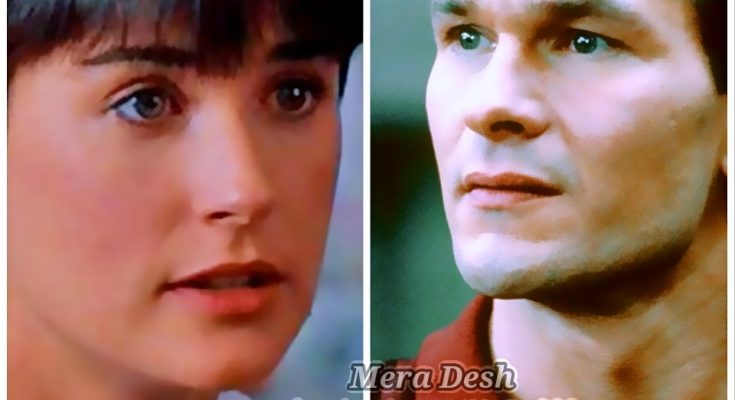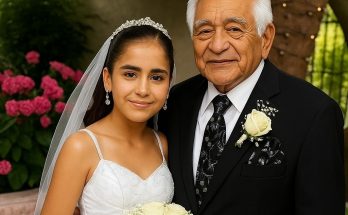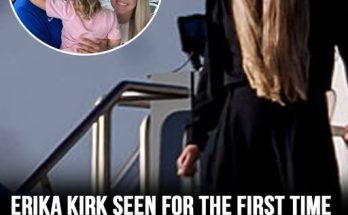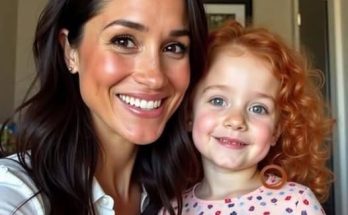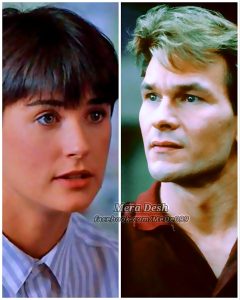
Her hands pressed into the cool clay, fingers gliding as the wheel spun, when suddenly Sam’s arms wrapped around her from behind. That moment in “Ghost” (1990), set to “Unchained Melody,” became more than a scene. It was an immortal image of love. Audiences felt the heat of their closeness, the tenderness of his touch, and the unspoken promise that their bond would never break, even when fate tore them apart.
The story of Sam Wheat, played by Patrick Swayze, and Molly Jensen, portrayed by Demi Moore, was simple yet profound. Newly in love and beginning their lives together in New York, they embodied hope, laughter, and passion. Their happiness shattered when Sam was suddenly murdered during a mugging, leaving him trapped between worlds. From there, “Ghost” became both a heartbreaking love story and a thrilling supernatural mystery, showing that true devotion continues even after death.
Patrick Swayze gave Sam a soulful vulnerability, shifting from the physicality of his earlier role in “Dirty Dancing” (1987) to a man whose power came from pure emotion. His greatest strength was not his ability to fight villains but his enduring loyalty to Molly. Demi Moore matched that intensity with a performance that captured grief in its rawest form. Her trembling voice, tear-filled eyes, and fragile hope touched audiences who understood how sudden loss can crush a spirit.
The film’s emotional weight deepened with the introduction of Oda Mae Brown, a fraudulent psychic hilariously played by Whoopi Goldberg, who suddenly found herself genuinely able to communicate with Sam. Her reluctant cooperation provided both comic relief and a poignant bridge between the two lovers. Oda Mae’s scenes, whether channeling Sam’s voice or trying to cope with his constant pestering, were electrifying, and her performance earned her the Academy Award for Best Supporting Actress.
The danger was not limited to Sam’s separation from Molly. The shocking betrayal of Carl Bruner, played by Tony Goldwyn, added layers of suspense. Once trusted as Sam’s close friend, Carl was revealed as the man behind the deadly setup, driven by greed. His duplicity gave the story urgency, making Sam’s struggle not only about saying goodbye but about protecting Molly from the same fate.
The film’s visuals further strengthened its romance and mystery. The chilling images of shadowy figures dragging away villains created unforgettable moments of fear, while the luminous portrayal of Sam’s spirit carried a quiet beauty. Maurice Jarre’s score underscored each emotional beat, yet it was “Unchained Melody” that etched the story into memory. The song, already beloved from the 1960s, found new life as the soundtrack to one of cinema’s most romantic moments.
At its heart, “Ghost” was not about death but about the resilience of love. Sam’s final farewell to Molly, whispering words of comfort as he stepped into the light, left theaters filled with sobs. His declaration, “It’s amazing, Molly. The love inside, you take it with you,” reminded viewers that love transcends the physical world. The closing embrace, though spiritual, gave audiences a bittersweet sense of closure, proving that some connections cannot be severed by time or mortality.
The film became one of the top box office successes of 1990, a surprise triumph in an era dominated by action blockbusters. Its blend of supernatural intrigue, passionate romance, and heartfelt performances captivated viewers across generations. Patrick Swayze, Demi Moore, and Whoopi Goldberg turned what could have been a simple ghost story into a tale of eternal love.
Even today, the mere sound of “Unchained Melody” evokes the image of two lovers at a pottery wheel, their souls entwined in a moment of pure intimacy. “Ghost” remains proof that love endures, even in silence, even beyond life itself.
Love’s truest form lives in moments where passion and memory merge, and “Ghost” shows that when hearts connect so deeply, no force in the universe can separate them.
